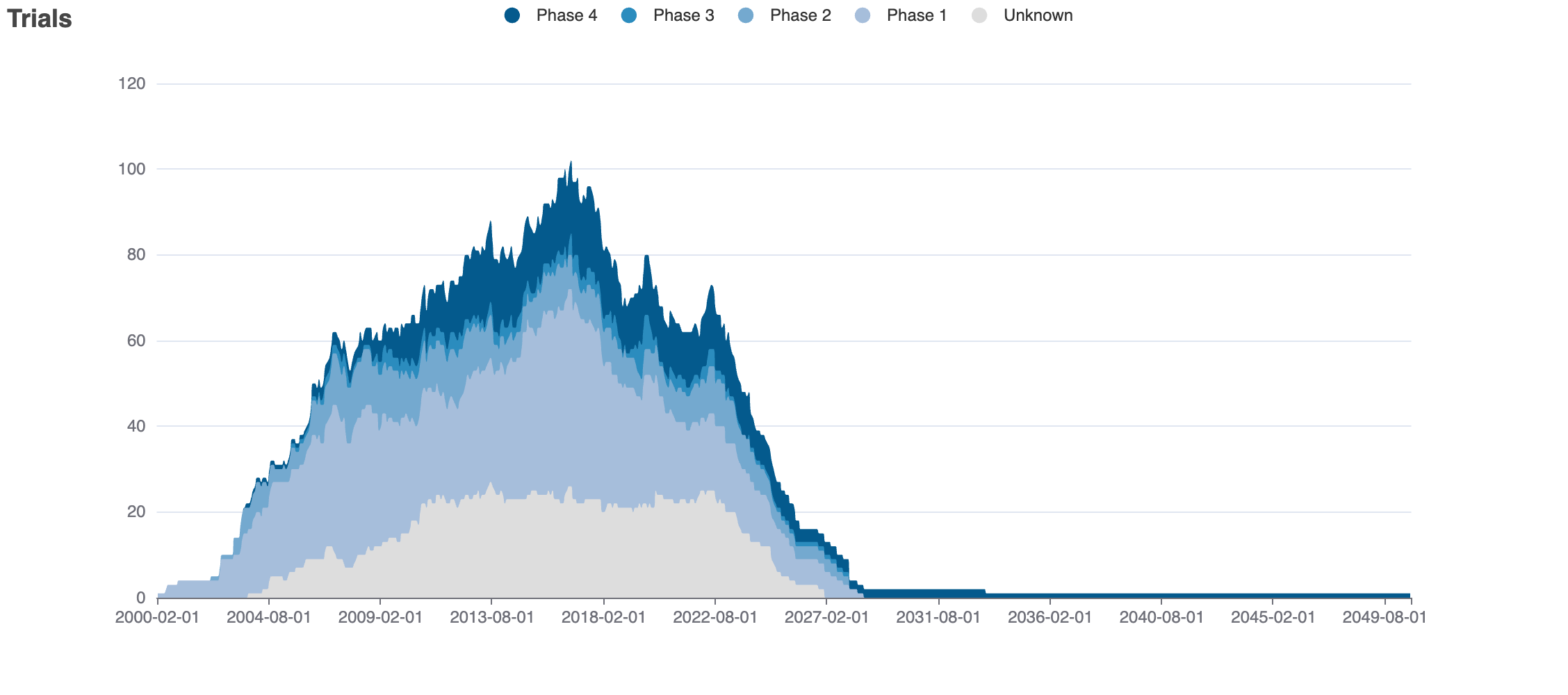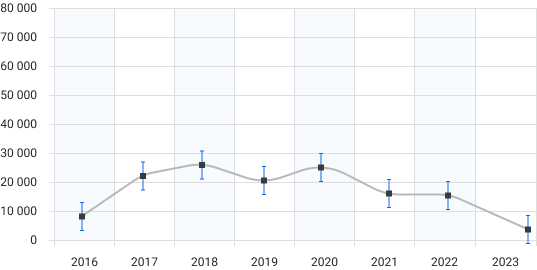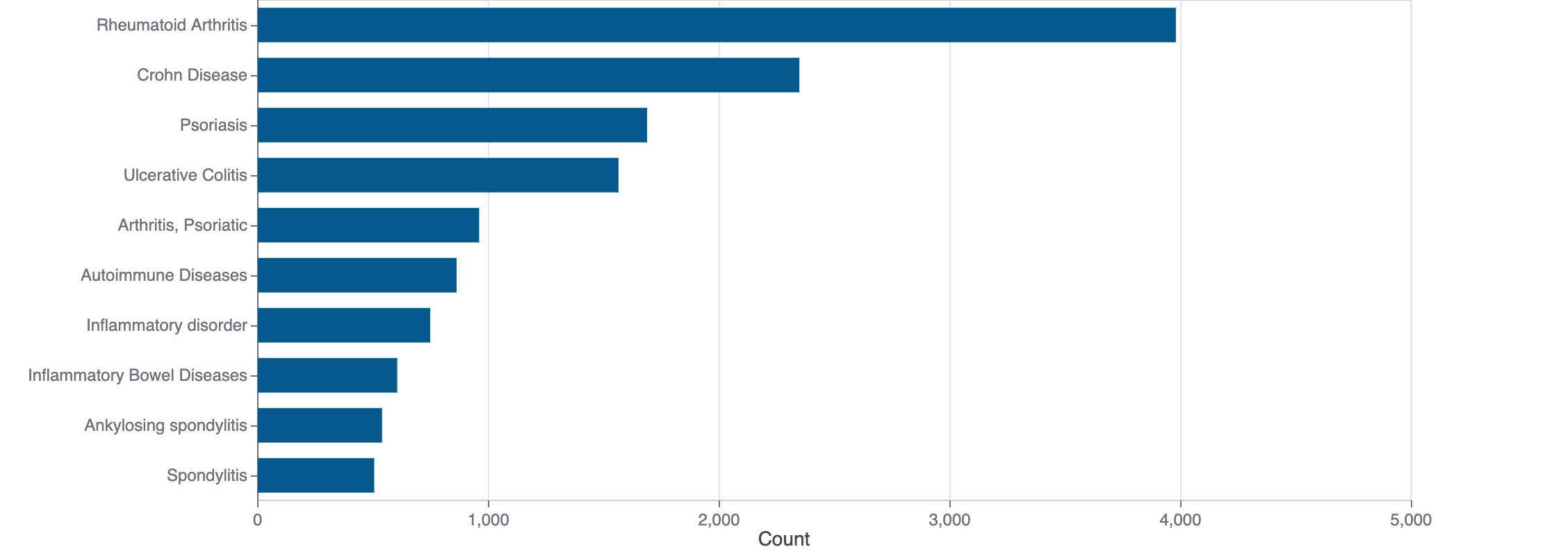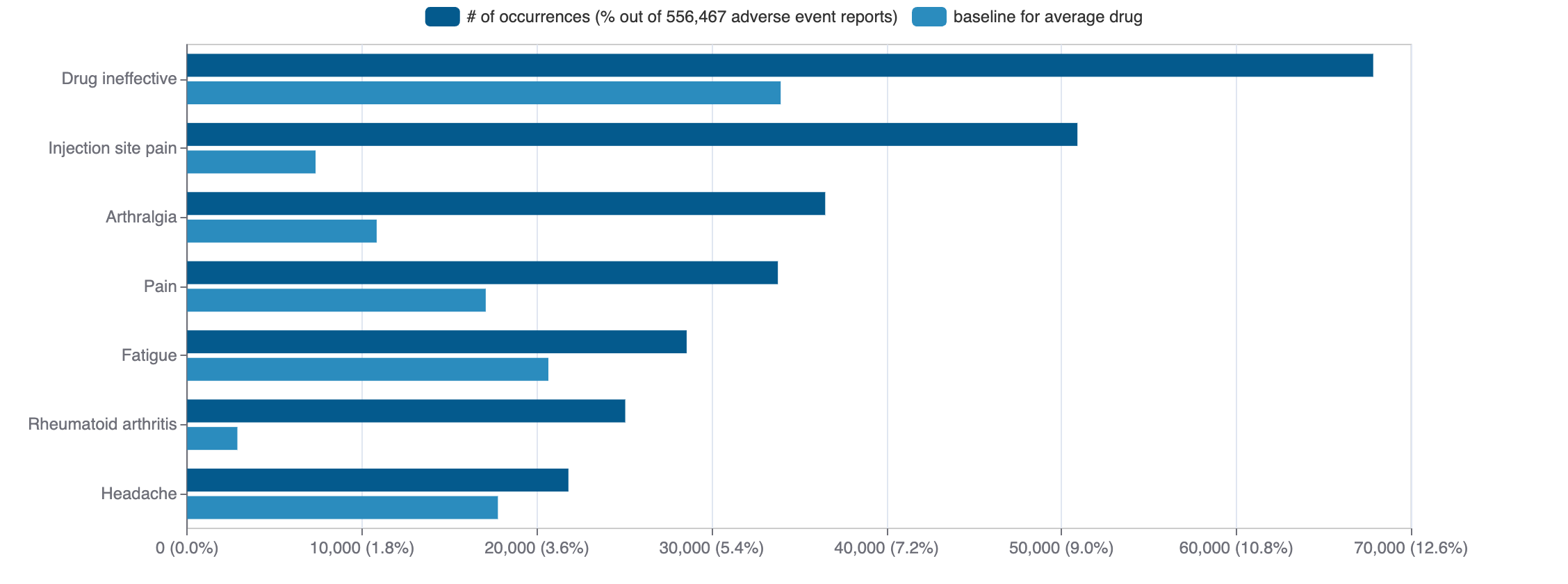Thioridazine
Mellaril-s, Thioridazine (thioridazine) is a small molecule pharmaceutical. Thioridazine was first approved as Mellaril-s on 1982-01-01. It is used to treat psychotic disorders and schizophrenia in the USA. The pharmaceutical is active against 5-hydroxytryptamine receptor 2C and 5-hydroxytryptamine receptor 2A. In addition, it is known to target G protein-activated inward rectifier potassium channel 2, D(1A) dopamine receptor, D(1B) dopamine receptor, 5-hydroxytryptamine receptor 1A, histamine H1 receptor, 5-hydroxytryptamine receptor 7, and 5-hydroxytryptamine receptor 6.
Download report
Favorite
Events Timeline
Commercial
Clinical
Drug
Target
Variants
Financial
Trends
Safety
Events Timeline
5D
1M
3M
6M
YTD
1Y
2Y
5Y
Max
Events
FDA approval date
EMA approval date
Patent expiration date
Study first post date
Last update post date
Start date
Primary completion date
Completion date
Results first post date

Mock data
Subscribe for the real data
Subscribe for the real data
Commercial
Therapeutic Areas
Therapeutic Area | MeSH |
|---|---|
| mental disorders | D001523 |
Trade Name
FDA
EMA
Thioridazine (discontinued: Mellaril, Mellaril-s, Thioridazine)
Drug Products
FDA
EMA
New Drug Application (NDA)
New Drug Application (NDA)
Abbreviated New Drug Application (ANDA)
Abbreviated New Drug Application (ANDA)
Labels
FDA
EMA
Brand Name | Status | Last Update |
|---|---|---|
| thioridazine hcl | 2006-11-27 | |
| thioridazine hydrochloride | ANDA | 2025-11-11 |
Indications
FDA
EMA
Indication | Ontology | MeSH | ICD-10 |
|---|---|---|---|
| schizophrenia | EFO_0000692 | D012559 | F20 |
| psychotic disorders | — | D011618 | F20.81 |
Agency Specific
FDA
EMA
No data
Patent Expiration
No data
HCPCS
No data
Clinical
Clinical Trials
13 clinical trials
View more details

Mock data
Subscribe for the real data
Subscribe for the real data
Indications Phases 4
Indication | MeSH | Ontology | ICD-10 | Ph 1 | Ph 2 | Ph 3 | Ph 4 | Other | Total |
|---|---|---|---|---|---|---|---|---|---|
| Schizophrenia | D012559 | EFO_0000692 | F20 | — | — | 1 | 2 | 3 | 6 |
| Psychotic disorders | D011618 | — | F20.81 | — | — | — | 1 | 2 | 3 |
| Schizophrenia spectrum and other psychotic disorders | D019967 | — | — | — | — | — | 1 | — | 1 |
Indications Phases 3
Indication | MeSH | Ontology | ICD-10 | Ph 1 | Ph 2 | Ph 3 | Ph 4 | Other | Total |
|---|---|---|---|---|---|---|---|---|---|
| Dementia | D003704 | EFO_0003862 | F03 | — | — | 1 | — | — | 1 |
| Psychophysiologic disorders | D011602 | — | F45.9 | — | — | 1 | — | — | 1 |
| Depression | D003863 | — | F33.9 | — | — | 1 | — | — | 1 |
| Anxiety disorders | D001008 | EFO_0006788 | F41.1 | — | — | 1 | — | — | 1 |
| Somatoform disorders | D013001 | — | F45 | — | — | 1 | — | — | 1 |
| Carcinoma | D002277 | — | C80.0 | — | — | 1 | — | — | 1 |
| Hepatocellular carcinoma | D006528 | — | C22.0 | — | — | 1 | — | — | 1 |
| Liver neoplasms | D008113 | EFO_1001513 | C22.0 | — | — | 1 | — | — | 1 |
Indications Phases 2
No data
Indications Phases 1
Indication | MeSH | Ontology | ICD-10 | Ph 1 | Ph 2 | Ph 3 | Ph 4 | Other | Total |
|---|---|---|---|---|---|---|---|---|---|
| Obesity | D009765 | EFO_0001073 | E66.9 | 1 | — | — | — | — | 1 |
| Body weight | D001835 | EFO_0004338 | — | 1 | — | — | — | — | 1 |
| Weight gain | D015430 | — | — | 1 | — | — | — | — | 1 |
| Myeloid leukemia acute | D015470 | — | C92.0 | 1 | — | — | — | — | 1 |
| Healthy volunteers/patients | — | — | — | 1 | — | — | — | — | 1 |
| Tick-borne encephalitis | D004675 | EFO_1001309 | A84 | 1 | — | — | — | — | 1 |
| Encephalitis | D004660 | — | — | 1 | — | — | — | — | 1 |
Indications Without Phase
Indication | MeSH | Ontology | ICD-10 | Ph 1 | Ph 2 | Ph 3 | Ph 4 | Other | Total |
|---|---|---|---|---|---|---|---|---|---|
| Bipolar disorder | D001714 | EFO_0000289 | F30.9 | — | — | — | — | 2 | 2 |
| Stroke | D020521 | EFO_0000712 | I63.9 | — | — | — | — | 1 | 1 |
| Drug-related side effects and adverse reactions | D064420 | — | T88.7 | — | — | — | — | 1 | 1 |
| Drug interactions | D004347 | — | — | — | — | — | — | 1 | 1 |
| Type 2 diabetes mellitus | D003924 | EFO_0001360 | E11 | — | — | — | — | 1 | 1 |
| Emergencies | D004630 | — | — | — | — | — | — | 1 | 1 |
Epidemiology
Epidemiological information for investigational and approved indications
View more details
Drug
General
| Drug common name | Thioridazine |
| INN | thioridazine |
| Description | Thioridazine is a phenothiazine derivative having a methylsulfanyl subsitituent at the 2-position and a (1-methylpiperidin-2-yl)ethyl] group at the N-10 position. It has a role as a serotonergic antagonist, a H1-receptor antagonist, an alpha-adrenergic antagonist, a dopaminergic antagonist, a first generation antipsychotic, an EC 3.4.21.26 (prolyl oligopeptidase) inhibitor and an EC 1.8.1.12 (trypanothione-disulfide reductase) inhibitor. It is a member of phenothiazines and a member of piperidines. It contains a methylsulfanyl group. |
| Classification | Small molecule |
| Drug class | Typical antipsychotic |
| Image (chem structure or protein) |  |
| Structure (InChI/SMILES or Protein Sequence) | CSc1ccc2c(c1)N(CCC1CCCCN1C)c1ccccc1S2 |
Identifiers
| PDB | — |
| CAS-ID | 50-52-2 |
| RxCUI | — |
| ChEMBL ID | CHEMBL479 |
| ChEBI ID | 9566 |
| PubChem CID | 5452 |
| DrugBank | DB00679 |
| UNII ID | N3D6TG58NI (ChemIDplus, GSRS) |
Target
Agency Approved
No data
Alternate
MALT1
MALT1
Organism
Homo sapiens
Gene name
MALT1
Gene synonyms
MLT
NCBI Gene ID
Protein name
mucosa-associated lymphoid tissue lymphoma translocation protein 1
Protein synonyms
caspase-like protein, MALT lymphoma-associated translocation, MALT1 protease, mucosa associated lymphoid tissue lymphoma translocation gene 1, Paracaspase, paracaspase-1
Uniprot ID
Mouse ortholog
Malt1 (240354)
mucosa-associated lymphoid tissue lymphoma translocation protein 1 homolog (Q8C7N9)
Variants
No data
Financial
Revenue by drug
$
€
£
₣
No data
Estimated US medical usage
Thioridazine
Total medical expenditures per year (USD, in millions)

Mock data
Subscribe for the real data
Subscribe for the real data
Number of persons purchased

Mock data
Subscribe for the real data
Subscribe for the real data
Number of purchases

Mock data
Subscribe for the real data
Subscribe for the real data
Refill frequency

Mock data
Subscribe for the real data
Subscribe for the real data
Price per prescription (USD)

Mock data
Subscribe for the real data
Subscribe for the real data
Tabular view
Trends
PubMed Central
Top Terms for Disease or Syndrome:

Mock data
Subscribe for the real data
Subscribe for the real data
Additional graphs summarizing 5,980 documents
View more details
Safety
Black-box Warning
Black-box warning for: Thioridazine hcl, Thioridazine hydrochloride
Adverse Events
Top Adverse Reactions

Mock data
Subscribe for the real data
Subscribe for the real data
850 adverse events reported
View more details
© 2020-2025 Collaborative Drug Discovery Inc. (CDD) | Terms of Use